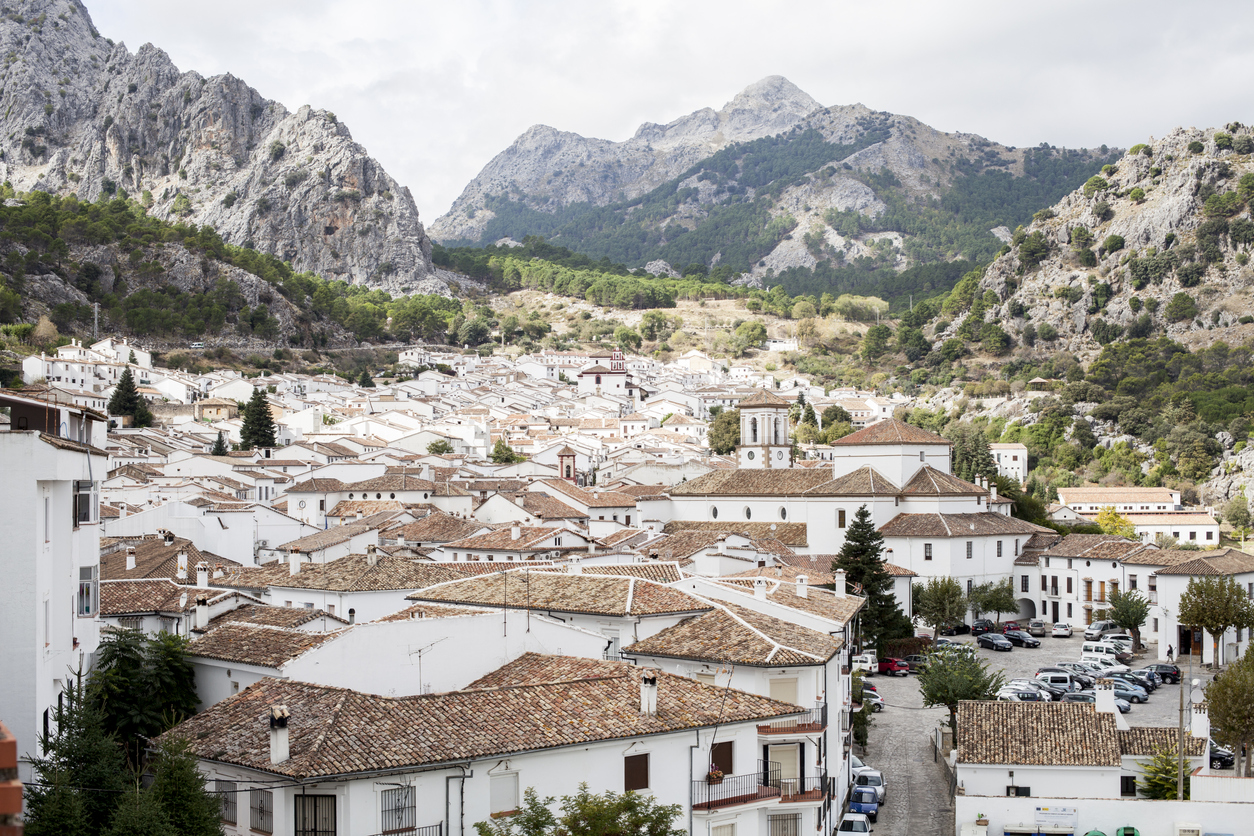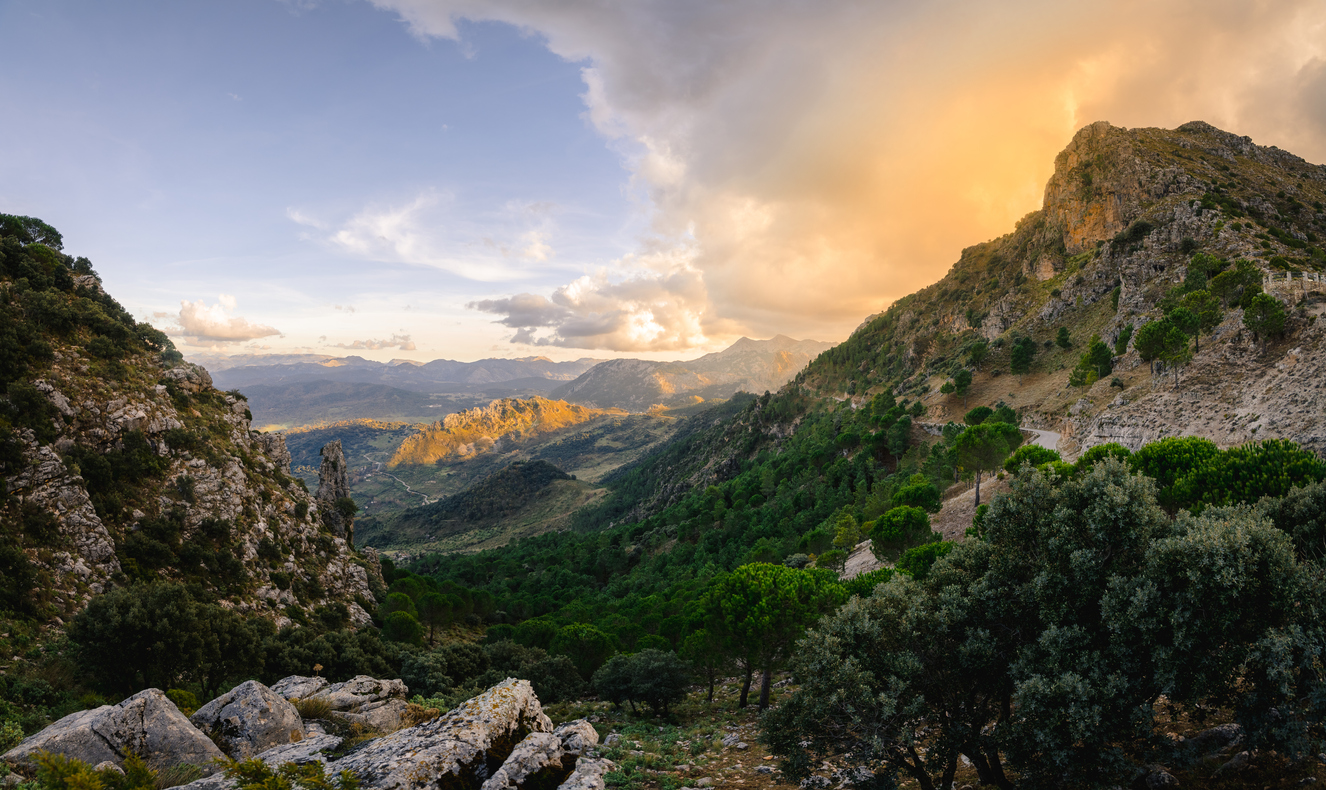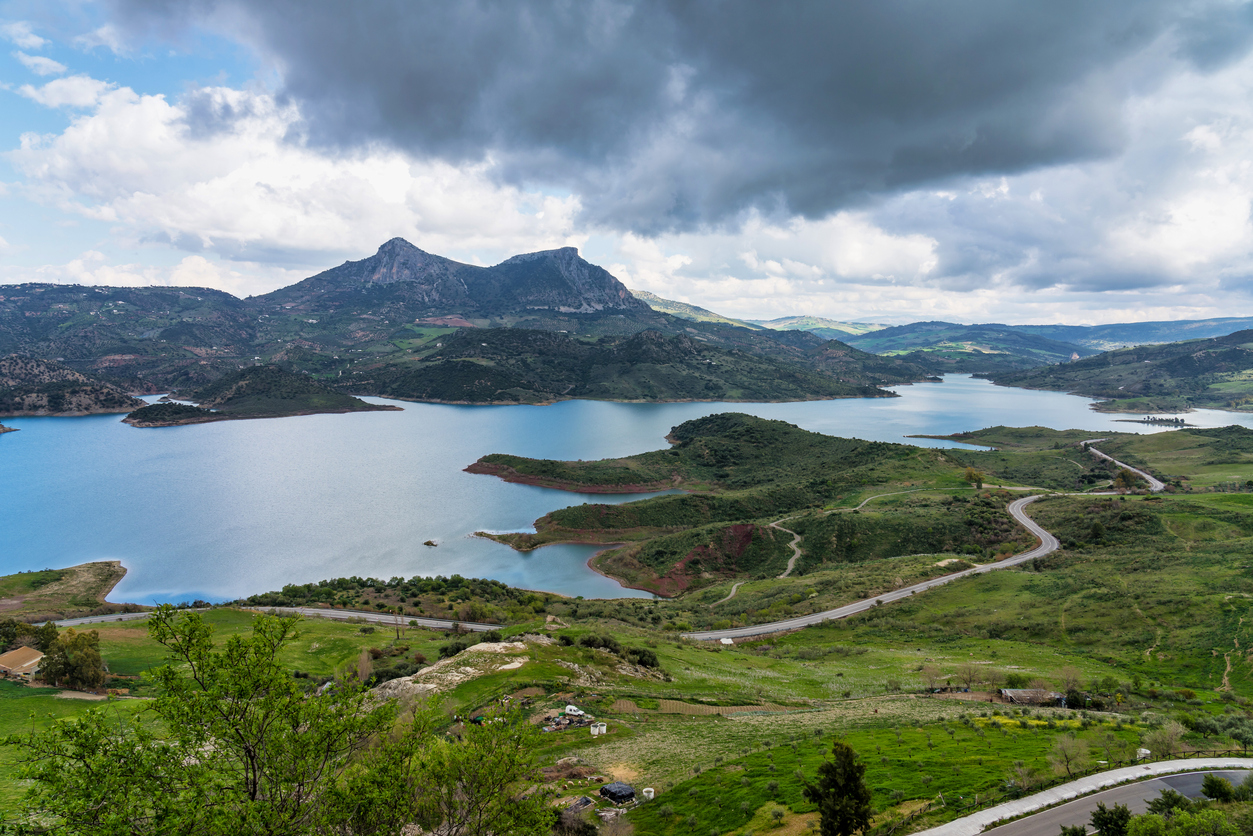The Sierra de Grazalema Natural Park is only a heartbeat away; in fact, you can see the towering mountains in the far distance from your winery’s porch. The time is ripe for an outing to visit its famous and rare Spanish fir forest, characterised by impressive gorges and breathtaking gullies.
The extraordinary local microclimate makes the Sierra de Grazalema region one of the most ecologically important in Spain. Mountains rise to over 1500m providing some beautiful scenery and highlights include spectacular views and the rare Pinsapo trees. An endangered species native to Southern Spain, the evergreen Spanish fir is closely related to the European silver fir and can only be found in the Sierra de las Nieves Natural Park and in Sierra Bermeja, both located in Malaga. For a complete experience, visiting the area’s white villages perched high in the mountains or nestled in greenery is a must.
Buckle up and enjoy the ride!
The White Villages Of The Sierra de Grazalema
The Sierra de Grazalema offers a wealth of walking trails in excellent countryside, dramatic limestone peaks, fertile river valleys, verdant mountain pastures filled with flowers in the spring and delightful mountain villages. In addition, the spectacular set of Paleolithic cave paintings are to be found here, in the Pileta cave, where a lantern-lit tour will reveal stalagmites, stalactites and paintings of fish, goats and stick men, some dating back 25,000 years.
Grazalema
The lively village of Grazalema, nestling in a valley at 823m within the Natural Park, is surrounded by beautiful and protected wooded mountains and rolling sierras, and is undoubtedly one of the most picturesque in Andalusia. Breathtaking vistas, narrow, steep and immaculately kept cobblestone streets lined by traditional whitewashed houses with windows covered by wrought-iron rejas and plant pots spilling over with colourful flowers greet the visitor. Roaming the town’s streets, such as Las Piedras and Las Parras, is a truly enjoyable experience. The main square, Plaza de España, with its gorgeous 18th century Iglesia de la Aurora and medieval fountain, is well-patronised. This is the place to call in at and have a pit stop for a drink and snack amidst neighbours catching up after an hour apart, older men in berets and shades drinking Pedro Ximenez, and teenagers sharing tapas. Stopping by the viewpoints of the town—the most famous of which is the Mirador de Grazalema located near Plaza Asomadero—to marvel at the panoramic views of the valley below is an experience second to none.

El Bosque
A small white village at the foot of the Sierra de Grazalema, El Bosque alone is worth a trip to Southern Spain. The village intrigues and captivates visitors and is one of the best entrance gates to the Natural Park. Its Visitor’s Centre issues permits to visit some of the area’s restricted access hiking routes. In addition, El Bosque boasts a botanic garden of plants from the sierras.
For all foodies and cheese fanciers out there, visiting the local cheese museum is highly recommendable. Here you can buy a wedge of the typical aged emborrado grazalemeña sheep’s cheese or a hunk of the full-flavoured fragrant wine cheese.
Ubrique
Beautiful and alluring but remote, the town of Ubrique dazzles under the bright sun and is nestled at the bottom of a valley surrounded by steep hills, south of El Bosque and Grazalema. This collection of whitewashed houses—built in medieval times—is where many of the top fashion brands source their leather goods. The town’s specialisation in leather goes back 200 years and started initially with tanning leather and evolved into the precise leatherwork which the town has become so well known for and gained world fame. A leather museum—the Museo de la Piel—celebrates the town’s esteemed leather heritage, exhibiting various leather works and the old leather production machinery. The shade provided by the village’s narrow passages and winding alleyways offers a welcome respite for walkers. A stroll to the San Antonio Hermitage and the Capuchin convent, which today boasts an exhibition centre, is a pleasant and interesting experience. Great remains from Roman times include the Ocuri archaeological site and the Roman road linking Ubrique to Benaocaz, both worth a visit.
Benaocaz
A small village of a little over 700 inhabitants, Benaocaz was declared a historical site. Located at the junction between the Sierra de Grazalema Natural Park and Los Alcornocales Natural Park, it boasts impressive remains of its old Nasrid neighbourhood, such as the village’s narrow cobbled streets. Worth visiting are the Nasrid Castle of Tavizna, El Calvario Hermitage and San Blas Hermitage, and the Cintillo and Aguas Nuevas viewpoints.

Decide on a date and hit the road to discover the Sierra de Grazalema’s immense charm.




